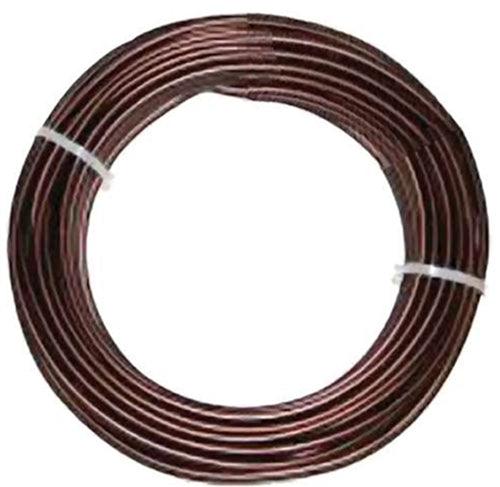 Even though we weren’t able to find out who this tree belongs to or even who took the photo, I decided to feature it as out lead photo for reasons I hope you find obvious. It’s a Japanese maple in full brilliant fall color. You might notice the unusual mounded nebari as well as the outstanding movement in the trunks and branches.
Even though we weren’t able to find out who this tree belongs to or even who took the photo, I decided to feature it as out lead photo for reasons I hope you find obvious. It’s a Japanese maple in full brilliant fall color. You might notice the unusual mounded nebari as well as the outstanding movement in the trunks and branches.
We’re going to dazzle our senses with some fall color today. Almost all the photos shown here are from our Bonsai Bark archives, which dates all the way back to 2009.
There’s more to fall bonsai than just color however. Fall is a good time to fertilize, and though I know we’ve mentioned it before, nitrogen in balance with other key macro nutrients is important, even in the fall, contrary to an old and incorrect bonsai myth which says that using nitrogen too late causes top growth to continue into the colder months.
However, the truth is that plants determine when it’s time to stop growing based on light and temperature, not on whether or not there is nitrogen available (thanks to Michael Hagedorn for exposing this commonly held misconception in his groundbreaking new book Bonsai Heresy).
You can also trim in the fall once summer growth has stopped, but don’t do it too soon. If you trim while your bonsai is still growing, it might be inspired to push out some tender new growth which won’t have time to harden off before winter sets in.
 Here’s a brilliant tree (and lovely pot) from back in the early days of Bonsai Bark. It belongs to Wolfgang Putz and the pot is by Ingrid Kralovec. The tree is a Korean hornbeam. The botanical name is Carpinus turczaninowii (though you’ll sometimes see them referred to as Carpinus coreana).
Here’s a brilliant tree (and lovely pot) from back in the early days of Bonsai Bark. It belongs to Wolfgang Putz and the pot is by Ingrid Kralovec. The tree is a Korean hornbeam. The botanical name is Carpinus turczaninowii (though you’ll sometimes see them referred to as Carpinus coreana).
 This Japanese Maple was donated to our National Bonsai and Penjing Museum by Ryutaro Azuma. It has been in training since 1906. The photo is from Capital Bonsai.
This Japanese Maple was donated to our National Bonsai and Penjing Museum by Ryutaro Azuma. It has been in training since 1906. The photo is from Capital Bonsai.
 This strikingly colorful Ginkgo with its thick and uncommonly well tapered trunk (especially for a ginkgo) is from a Bill Valavanis (International Bonsai) facebook post from way back in 2010.
This strikingly colorful Ginkgo with its thick and uncommonly well tapered trunk (especially for a ginkgo) is from a Bill Valavanis (International Bonsai) facebook post from way back in 2010.
 Berries can provide fall color too. Not only does our friend Bill Valavanisis style and raise top quality bonsai, he also takes great photos. This one is from the 2016, 90th Kokufu Bonsai Exhibition in Tokyo. No variety is given.
Berries can provide fall color too. Not only does our friend Bill Valavanisis style and raise top quality bonsai, he also takes great photos. This one is from the 2016, 90th Kokufu Bonsai Exhibition in Tokyo. No variety is given.
 The luminous red/pink leaves, set off by the purple pot with strong red undertones, work its magic to perfection. The tree is an aptly named Burning bush euonymus (Euonymus alatus form ciliatodentatus) that belongs to Haruyosi, who in addition to being our favorite tiny bonsai master (not him, his trees!) is also a master bonsai potter.
The luminous red/pink leaves, set off by the purple pot with strong red undertones, work its magic to perfection. The tree is an aptly named Burning bush euonymus (Euonymus alatus form ciliatodentatus) that belongs to Haruyosi, who in addition to being our favorite tiny bonsai master (not him, his trees!) is also a master bonsai potter.
 Maro Komsta's Sumac showing off its fall color. Sumac are everywhere here in northern Vermont, including outside my window and this is exactly how they look. Well, not exactly... they're much bigger and growing in the ground. l don't know anything about the scroll, except that it's beautiful and works with the tree.
Maro Komsta's Sumac showing off its fall color. Sumac are everywhere here in northern Vermont, including outside my window and this is exactly how they look. Well, not exactly... they're much bigger and growing in the ground. l don't know anything about the scroll, except that it's beautiful and works with the tree.
 A rough bark Japanese maple in full fall color. Though you can only see part of the base of the trunk, still, you can get a pretty good idea just how powerful this tree is; with or without leaves. This photo is from Luis Vallejo's Bonsai Studio (Bonsai Estudio), at the Bonsai Museum Alcobendas in Spain.
A rough bark Japanese maple in full fall color. Though you can only see part of the base of the trunk, still, you can get a pretty good idea just how powerful this tree is; with or without leaves. This photo is from Luis Vallejo's Bonsai Studio (Bonsai Estudio), at the Bonsai Museum Alcobendas in Spain.

